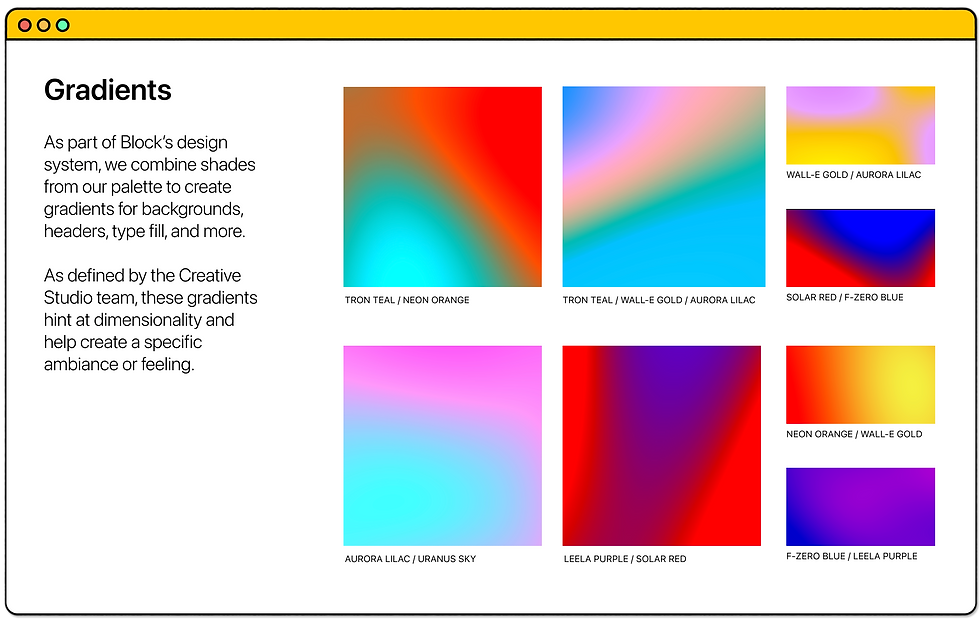Manager Development Journey Map
PROJECT SUMMARY
To help Block managers more easily navigate their development journey, I led the design of a visual journey map that clarified available offerings and the recommended progression through them. While multiple programs existed, there was no centralized, digestible resource that outlined what was available, when to take it, or which opportunities were most relevant based on a manager’s level or tenure.
Instead of relying on dense documentation, I partnered with HRBPs, Manager Effectiveness, and People Leadership teams to create an intuitive, visually engaging “map” that framed our development programs as destinations on a journey. The result was a set of two sequenced maps—one for foundational learning and one for more advanced, a-la-carte growth - embedded across our platforms and used widely by HRBPs and managers alike.
TOOLS
Figma, Adobe InDesign, Docebo
UX Mapping, Brand Alignment, UI Design, Scalable System Design, Employee Experience Design, Instructional Design Principles
SKILLS
Mapping the Journey of a Manager
Before jumping into visual design, I worked closely with key stakeholders (HRBPs, Manager Excellence, etc.) to define what the ideal development journey should look like for Block managers—based on their role, experience, and evolving needs. We outlined key program milestones, clarified sequence and prerequisites, and identified moments where learners may need more context or support. This planning phase allowed us to translate a complex set of offerings into an intuitive, visual format that made next steps easy to understand and act on.

UX Mapping, Manager Journey
Brand Alignment for Consistency & Continuity
A strong brand experience builds trust, recognition, and clarity— especially in learning environments. To ensure this journey map felt fully integrated into Block’s broader employee experience, I applied key elements of our brand system, including gradients, typography, and visual style. Gradients were used to convey movement and signal progress while maintaining visual accessibility, and the use of our core typefaces—Pilat and Neue Machina—ensured design cohesion. This thoughtful brand alignment made the map not only more engaging, but also easier to integrate alongside other internal resources and tools.




Block Brand Guidelines, Gradients & Typeface
Manager Essentials:
Stage 1 Map
One key insight from our UX mapping process was the need to divide the manager journey into two distinct stages - one focused on new or transitioning managers (Essentials), and another designed for more experienced leaders (Acceleration). This structure helped us meet learners where they were, while offering clear developmental progression.
For Stage 1, I designed a visual roadmap using a “wayfinding” metaphor - transforming foundational programs into sequential destinations. This helped managers quickly understand what was available, what to take next, and how each experience built toward leadership growth. The layout reduced cognitive load and made the path feel intuitive and goal-oriented.
To ensure long-term usability, I built a flexible, low-lift visual system using Figma and InDesign that could scale with program changes. This allowed us to add or remove offerings without requiring a full redesign—a stakeholder priority that proved critical post-launch.
Manager Essentials (Stage 1)
Manager Acceleration:
Stage 2 Map
As managers move beyond foundational development, their learning needs become more diverse, self-directed, and context-specific. Stage 2 of the journey map was intentionally designed to reflect this shift—offering a flexible, a-la-carte selection of experiences that empower leaders to chart their own growth path. From a learning design perspective, this design reinforces learner autonomy and supports just-in-time development aligned with real-world challenges.
Visually, the less linear structure and modular layout of the map were crafted to mirror this open-ended learning philosophy, making it easy to explore and select offerings based on role, goals, or moment-in-time needs—while staying consistent with the Stage 1 experience.
Outcomes & Impact
Since launch, the Manager Journey Map has been embraced as a go-to resource across the People Team and beyond. HRBPs regularly share it with their client groups, it’s embedded within our LMS, and it’s used to onboard new managers into the development ecosystem. Stakeholders appreciated the map’s ability to clearly communicate offerings, encourage appropriate sequencing, and reduce confusion about where to start.
By creating a visually engaging, brand-aligned, and easily updatable resource, we delivered a solution that not only clarified the path—but helped managers confidently take the next step in their growth.

